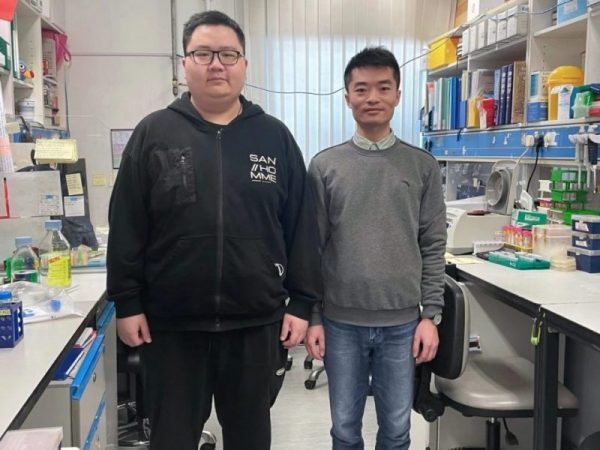

In a groundbreaking study conducted by PhD student Hua QIU and post-doctoral researcher Dr. Xiandeng WU, from the Division of Life Science led by Prof. Mingjie Zhang (formerly from the Division of Life Science at HKUST), significant progress has been made in understanding the mechanisms involved in short-distance, directional transport of vesicles within cells. Vesicles are small sac-like structures responsible for transporting crucial molecules within cells. While the involvement of molecular motors in long-distance vesicle transport is known, the mechanisms governing shorter distances have remained unclear. In this study, the team specifically investigated synaptic vesicles, which play a vital role in transmitting signals between nerve cells.
The research team discovered that a process known as phase separation, where certain proteins form distinct condensed structures, plays a crucial role in facilitating regulated and directional vesicle transport. More specifically, a large scaffold protein called Piccolo undergoes phase separation with synaptic vesicles in response to calcium signals. This enables Piccolo to extract the vesicles from a clustered reservoir and deposit them onto another condensed structure called the active zone. Consequently, this process allows for the transport of synaptic vesicles between different sub-compartments within nerve cell terminals. The team also identified another protein called TFG that participates in vesicle trafficking between cellular compartments through phase separation.
These findings have significant implications as they unveil a previously unknown mechanism for short-distance, directional vesicle transport in cells. While long-distance transport relies on molecular motors, this research highlights the active role of protein phase separation in facilitating vesicle movement over shorter distances. Understanding these mechanisms is crucial for deciphering how cells precisely control the distribution of vesicles within subcellular compartments. Moreover, this knowledge expands our understanding of cellular processes and may have implications for various biological functions that rely on vesicle transport, including neuronal communication and secretion of molecules in other cell types. Ultimately, these findings open up new avenues for further research and potential applications in the medical field.
Publication Reference:
Hua Qiu, Xiandeng Wu, Xiaoli Ma, Shulin Li, Qixu Cai, Marcelo Ganzella, Liang Ge, Hong Zhang, and Mingjie Zhang. Short-distance vesicle transport via phase separation, Cell 187, 1–19 (2024), https://doi.org/10.1016/j.cell.2024.03.003.